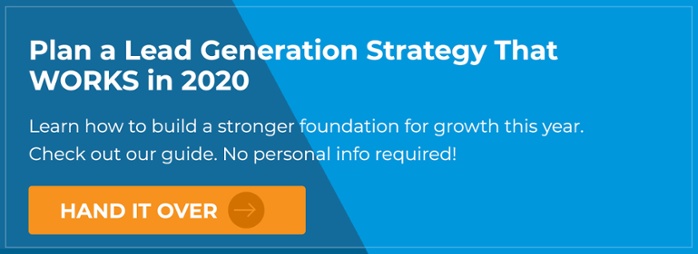
Creating an Effective Healthcare Content Marketing Strategy
Patrick Dodge
Founder

Healthcare brands realize they need content marketing to optimize their websites today, but many of them lack a clear focus and direction that delivers results.
We see many companies that update their blogs almost by reflex, publishing a mix of educational posts and company news in every direction, hoping something will stick.
As we gear up for 2020, there’s no room for a scattershot approach in your content strategy. The internet is just too saturated with great content. If healthcare companies want to succeed with content marketing today, they need insight into where the best opportunities for organic search traffic lie and get laser-focused on them.
Assess the Competition
You cannot build a successful content strategy today without keen insight into content density in Google search results (SERPs) for your products or services.
Ten years ago, only a handful of industries were totally saturated with content on search engines. Today, finding a service that’s up for grabs is like stumbling upon a rare and valuable flower.
It’s almost impossible for a newcomer to outrank websites that have dominated a particular service for years, but you can find a niche your brand can own.
How do you assess the competition in your industry?
Start with a Google search that looks like this: “[Your Industry or Solution]” AND “blog.”
If there are less than 10,000 results, you’ve got a great opportunity to work with. If results are between 10,000-100,000, you will have to put in a lot of hard work to edge your way into page one of SERPs. Any number between 100,000 and 1 million results represents a saturated niche, and you should explore other options.
In the example below, a search for “healthcare devices” AND “blog” produces 198,000 results. It’s a good bet your brand will struggle to gain much traffic with that much competition unless you already have a high domain authority for that particular phrase.

You can to improve the odds by narrowing the topic. “Heart health devices” has roughly 6,400 results, presenting a great opportunity for a brand that specializes in this product.

Research Your Topics
Now that you have a niche to focus on, you can research how much search traffic the topic gets.
A narrower niche will get fewer searches a month – that’s okay! Keywords that get thousands of searches are often referred to as “reach topics,” meaning they are too broad (and not useful) for the average business to rank for.
A good topic gets between 200-500 searches a month and has a relatively low “difficulty score.” This metric, provided by SEO tools like SEM Rush and Moz, measures how competitive a term is on a scale of 1 to 100.
Your brand’s likelihood of ranking for a keyword will depend on your domain and page authority, the quantity and quality of websites linking to yours, how relevant the term is to your existing content, and other key attributes. As a general rule, I try to avoid phrases with difficulty scores higher than 50 if I can, although this is often tough to avoid when building out subtopics to support your content strategy.
At the end of the day, you’ll want to aim for a topic that has the least competition in SERPs, the highest search volume, the lowest difficulty score, and is relevant to your service offering.
Pillar Content & Topic Clusters

This is where you can put all that research to work!
Pillar pages and topic clusters are tools that give life to your content strategy. Pillar pages serve as a master resource for a given topic. It covers all aspects of the subject while leaving plenty of room for covering subtopics (also known as topic clusters) in greater depth.
Topic clusters hyperlink back to the pillar page, forming a “content hierarchy” that’s easy for Google to read and index. This topic-based approach to SEO has been embraced by marketers as the content strategy of the future.
Referring back to the example above, you might create a pillar page about “heart health devices,” explaining what they are, which types practitioners use, and how to derive actionable data from them. Your topic clusters would support the pillar page by covering each of these aspects in the blog with greater detail:
- What are heart health devices?
- Top 5 heart health devices practitioners use
- Finding the right heart health device for your practice
These may or may not be good topics -- I’m no expert on heart devices – but this is a decent example of how to approach pillar pages and topic clusters. Using tools like HubSpot, you can extract data to help you find the most relevant topics to support your strategy. With your topics planned out, you are now ready to set up a calendar and start creating content.
Interview Your Subject Matter Experts
It’s a good idea to delegate written content to an experienced blogger. You might have one on staff or you can outsource the work to an agency with experience in your industry.
Regardless of who writes the content or shoots the video, I highly encourage you to use interviews with real subject matter experts instead of researching your topics on the web. Too many companies are pumping out bland, unoriginal material rather than sharing their unique voice and stories.
Look around your office. You will find a wealth of information in your colleagues. They may not all be amazing writers, but their knowledge and experience can play an integral role in the impact your brand has on people seeking answers about your services.
Start by prepping your SMEs on the topics you want to write about, then schedule recorded interviews with them to capture all the insights they have to share. Send the audio file to a transcriptionist – a written transcript costs a dollar a minute or less – and use that to write from.
It never hurts to reference a few external resources and link to those sites -- a healthy website links to outside sources as well as attracting inbound links of its own – but the bulk of the content should be driven by your experts. This approach will ensure the finished product reflects your brand’s values and best practices. Using someone else’s work without attribution is not only dishonest, it can lead to publishing incorrect information that conflicts with regulatory compliance and other company standards.
Get Your Customers Involved
Once you’ve mastered the art of creating content from SME interviews, you can take things a step further by featuring clients in your content.
It’s important everyone understands the purpose is to use your customer’s expertise to educate the community, not promote your products and services.
When the opportunity to interview a client presents itself, healthcare brands often make the mistake of turning the discussion into a case study. This is nothing more than an advertisement, and it serves little purpose. When was the last time you read a case study with interest?
Instead, make the discussion about them. Explore stories of how your clients have found success and what they learned from it. You will have a much more compelling article, and it will inspire interest in your solution without coming across as self-serving.
Featuring clients in your content not only adds an element of credibility to your brand, it also strengthens your partnership with them. The collaboration will expose your customer to an entirely new audience on your website, email marketing, social media, and any other channel where you engage your followers. Content-based networking is a win-win every time!
Content marketing is one of the most critical aspects of healthcare marketing today. We all know buyers are well informed and empowered to make decisions based on their own research. Companies that assess the competitive landscape, find an unserved segment of their customer base, and go all in with a disciplined content strategy will be poised for success in the months ahead.
Aug 16, 2019 8:08:14 AM


